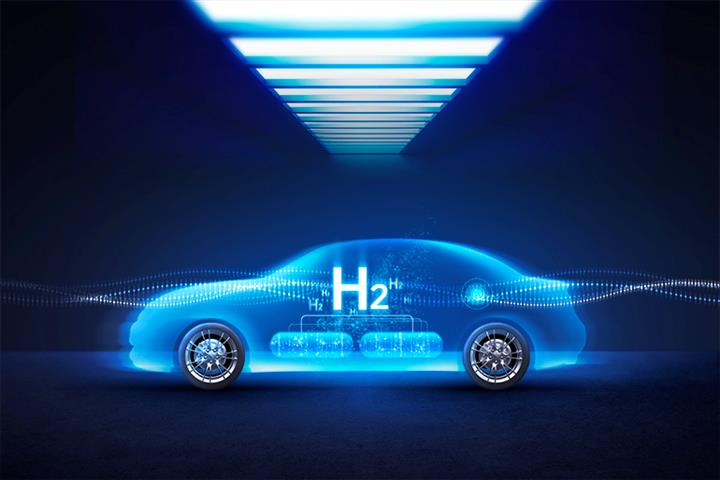 Shanghai's Lingang Breaks Ground on Hydrogen Industrial Park
Shanghai's Lingang Breaks Ground on Hydrogen Industrial Park(Yicai Global) Oct. 10 -- Construction has begun on the International Hydrogen Energy Valley located in Lingang New Area, part of Shanghai’s pilot free-trade zone. Finding ways to reduce material and equipment costs will be one of the main focuses of the park.
Covering an area of 1.55 square kilometers, the first phase of the International Hydrogen Energy Valley has already attracted over 20 firms engaged in the hydrogen sector.
The park will mainly focus on materials, equipment and public services as well as linking the entire industrial district, said Deng Haoqiang, deputy general manager at Shanghai Lingang Hydrogen Energy Industry Development. Both the layout of the pipes and positioning of the warehouses need to be relatively compact in order to develop the hydrogen energy in a secure and manageable manner.
Hydrogen fuel cell-powered vehicles are one of the major applications of hydrogen energy and China aims to have 50,000 hydrogen-powered vehicles by 2025, according to the National Development and Reform Commission’s hydrogen development plan issued in March.
China's sales of fuel cell cars jumped over two-and-a-half-fold in the first eight months from the same period last year to 1,888 units, according to the China Passenger Car Association. In order to reach the government’s target, shipments need to grow at an annual rate of more than 50 percent for the next few years, according to US consultancy firm KPMG.
And a lot will depend on how quickly costs can be brought down.
Self-Developed Tech
The focus has shifted to reducing costs in the home-grown industrial chain, when before the focus was on cutting technology-related costs, Yi Peiyun, chair of the board at fuel cell and electric pile maker Shanghai H-Rise New Energy Technology, told Yicai Global. After 2025, large-scale cost reduction will be emphasized.
Previously, almost everything in the electric piles, from catalysts, membrane electrodes to carbolic paper, were imported, but now more than 90 percent are developed locally, Yi said. This has brought down expenses drastically. Costs could fall even further if fuel cell autos’ sales reach 10,000 or even 100,000 units.
But the gas itself also needs to be more affordable.
If the price of hydrogen can fall to CNY35 (USD5) per kilogram without government subsidies, then the cost of a hydrogen-powered car will be less than that of a fossil fuel-powered one, said Yi.
Green Agenda
Lingang is leading the way in terms of a green and sustainable agenda. Top companies focusing on fuel cell parts, such as electric piles and membrane electrodes, have all positioned themselves in Lingang. This includes Zhizhen New Energy which is the biggest supplier of bipolar plates in China, with a 90 percent market share.
“In terms of fuel cells, we are able to find 80 percent of the core parts and components within a radius of 50 kilometers,” said Jing Shuai, head of the China division of US engine developer Cummins’ New Power Division.
Due to its early start in the hydrogen energy sector, Shanghai is the city with the most hydrogen refueling stations in China, New York-based KPMG said. The metropolis should have 70 such stations by 2025.
“Three refueling stations have now been put into use in Lingang and there should be another three or four by the fourth quarter next year and 14 by 2025,” said Deng.
Editor: Kim Taylor